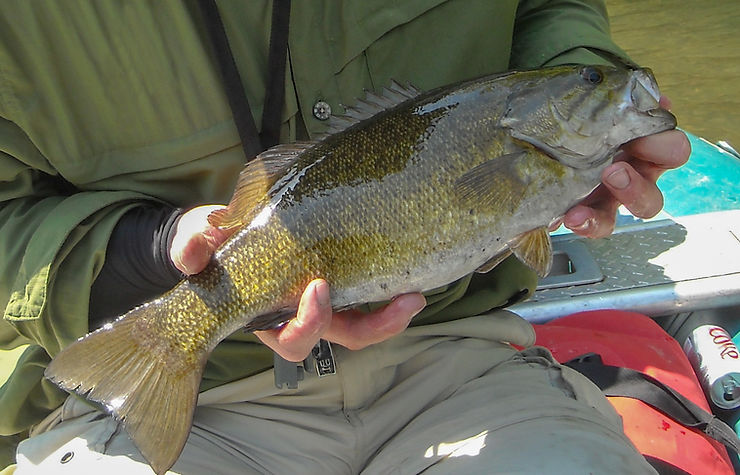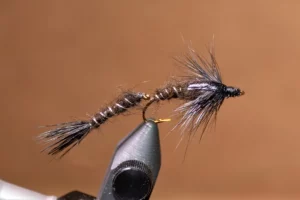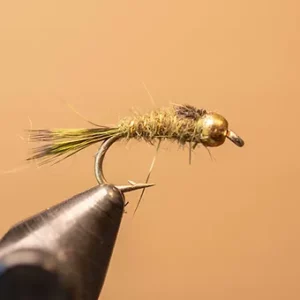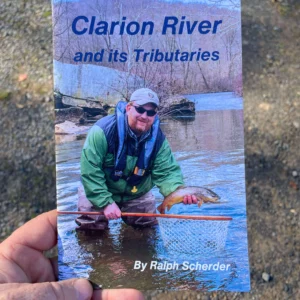Dobsonflies and the Fly Fisher

I’ll be the first to admit that taxonomy is not my strong suit, so simply stated, dobsonflies are a subfamily of insects that are part of the Megalopteran family Corydalidae. Literally translated from the Ancient Greek, Mega (“large”) and pteryx (“wing”) perfectly describes this species. Adult dobsonflies have a wingspan that often measures around 7 inches. Imagine tying an imitation of that size to the end of your tippet!
Dobsonflies are often confused with stoneflies in appearance, especially in the adult versions, but here’s where they fall taxonomically:
Megaloptera: dobsonflies, alderflies, fishflies
Odonata: damselflies, dragonflies
Plecoptera: stoneflies
Trichoptera: caddisflies
Looking at it this way makes it easy to see how each species is classified according to size. Although they share common characteristics, it would be almost impossible to confuse dobsonflies with caddisflies, for instance, when comparing them in-person. And about the only time they could be mistaken for a stonefly is when comparing a hellgrammite to a salmonfly nymph. In their adult versions, stoneflies possess hind wings that are larger and broader than their forewings whereas dobsonflies have longer forewings, not to mention the drastic size difference between the two.
Life Cycle of Dobsonflies
Hellgrammite females lay over 3,000 eggs in a single mass on vegetation or rocks that sit above the water line. This mass appears like a white blob that looks like bird droppings, which is nature’s way of protecting the eggs from being eaten. Two weeks later, that egg mass will turn into a liquid and the larvae drops into the water.
Hellgrammites spend approximately 1-5 years in the larval stage, often moulting 10-12 times during that period. This stage of their life cycle, in that regard, resembles stoneflies, which also live multiple years as nymphs, and in any waterway where each species is present, you’ll likely find them in various sizes.
The only time Hellgrammites live in the water is during their larval/nymphal stage. The rest of their life is spent on land, but in close proximity to water.
When ready to pupate, Hellgrammites climb a few centimeters out of the water and find a soft spot beneath a log or rock where they will spend 1-4 weeks before emerging as adults. Adult hellgrammites have very short lifespans, expiring a few days to a few weeks after mating. It’s also very rare to even see an adult Hellgrammite, aka Dobsonflies, because they are primarily nocturnal.

Importance to Fly Fishermen
When a Hellgrammite ended up in the seine, it was gold. You knew you’d catch at least one, possibly two smallmouth bass on a single Hellgrammite – they’re durable and almost always good for multiple catches. I always hooked them through the back of the collar so that as they drifted along the bottom, their long, flat bodies curled and uncurled and sometimes twisted in the current. When the water was low, with very little current, I’d remove all split-shot and just toss the Hellgrammite out there and let it work its magic. It would never take long until a smallmouth found it irresistible.
Trout love them, too, of course, and I think one of the reasons black Woolly Buggers work so well sometimes is because they effectively imitate these large nymphs. In many ways, the black marabou tail of the Bugger has the same action as the tail of a drifting natural. Hellgrammites offer fish a big, hearty meal.
Hellgrammite patterns have a place in the angler’s fly box, but how much space they deserve could be debated. If you’re targeting smallmouth bass, I’d definitely have multiple Hellgrammite patterns in various sizes to choose from. There’s absolutely no doubt about it: smallmouth bass that live in rivers and streams love Hellgrammites.
If your focus is mainly trout, dead-drifting a black Woolly Bugger might be all you need for the rare occasion when you’d even want to try a Hellgrammite. The exception to this would be if you’re after big fish. For instance, when I’m on the Clarion River or other big waters that I know are inhabited by tons of Hellgrammites as well as trophy-sized trout, I’ll put a couple Hellgrammite patterns in my box just in case.
In my opinion, it’s hard to find a good Hellgrammite pattern. One of the main triggers of a Hellgrammite is the natural movement of the tail as it drifts, and a traditional, straight-shanked hook just doesn’t do it justice. In my opinion, wiggle nymphs make a much more attractive Hellgrammite pattern. The one I tie is not much more than an articulated Hare’s Ear Nymph, and it works quite well. If you don’t have a specific Hellgrammite pattern handy, a large black stonefly nymph can get the job done, too.
Here’s the recipe for a Hellgrammite Wiggle Nymph that has worked well for me:
Hook: 3xl curved shank nymph hook with a 1xl standard nymph hook trailer (clip hook at the bend), size 6-10
Thread: Black
Tail: Black deer hair
Rib: Silver oval tinsel
Body/Thorax: Black Hare’s Ear Plus Dubbing
Wing case: Black body stretch
Legs: Black hen hackle
Did you enjoy this article about Dobsonflies?
Stay up to date with the Dark Skies Fly Fishing monthly newsletter for free and receive the latest posts in fly fishing news, tricks, tips, and techniques, stream reports, as well as updates on new flies added to the Online Store and exclusive discounts!
Sign Up NowMake Your Next Fishing Trip A Success With These Flies & Stream Guide
-
Flies
Hare’s Ear Nymph
$1.65 Select options This product has multiple variants. The options may be chosen on the product pageRated 0 out of 5



